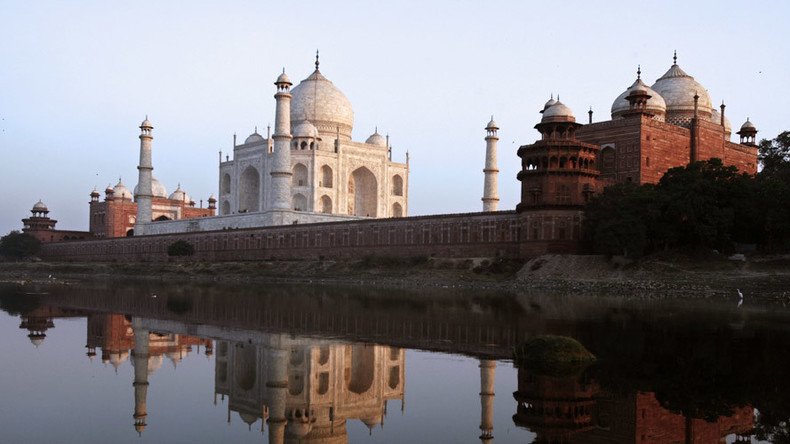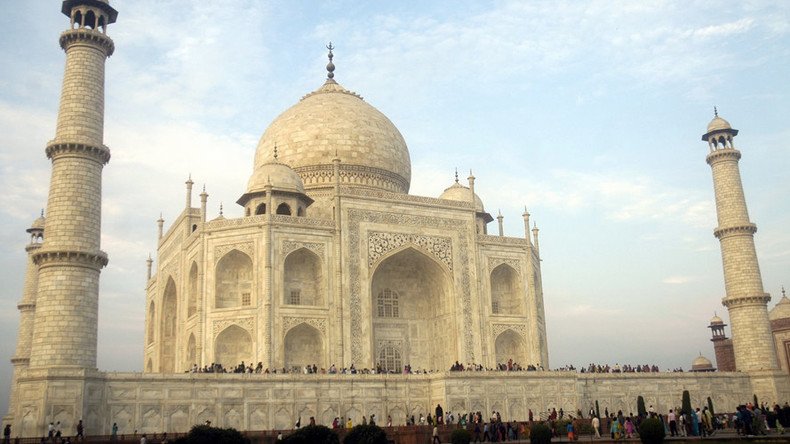India's Taj Mahal damaged by constant cleaning of insect poop

Excessive cleaning of the Taj Mahal, due to incessant insect excrement, threatens the centuries-old intricate marble, warns the Archaeological Survey of India.
Workers scrubbing the walls every day in an effort to counteract the constant staining are starting to damage the delicate mosaics, according to Bhuvan Vikram, the senior government archeologist in charge of the Taj.
“A series of marble panels depicting plant motifs on the walls or reflective tiles used in this part of the monument are becoming disfigured,” warned Vickram.

READ MORE: India set to start diverting major rivers including Ganges in unprecedented $300bn project
The Taj is built on the south bank of the heavily-polluted Yamuna river and mosquito-like insects from the cesspool are known to leave green and black poop marks on the monument.
Insects breeding in the Yamuna are swarming to Taj Mahal and leaving their green poop all over it https://t.co/J3DX8k5n4C
— India Today (@IndiaToday) May 17, 2016
The fish who kept the bug population down since the shrine was constructed in the 17th century have been forced out by the low river levels, leaving swarms of the non-biting midges to poop all over the iconic structure to their little hearts’ content.
Fly poop is going to ruin the Taj Mahal's marble https://t.co/ux5TkWuTzV (Image: ©entomart) pic.twitter.com/4I00mWlDCM
— Kyle Hill (@Sci_Phile) May 23, 2016
And what's grosser than gross?
Some of their excrement is burnt human tissue, since many of them are known to feast on ash from a nearby cremation ground.
The Taj Mahal’s exterior has long struggled to stay pristine, a victim of India’s severe air pollution which often turns the temple shades of yellow and brown.
Taj Mahal Pollution https://t.co/qLqkcx16Ef … #photography@picfair#artforsale#photosforsalepic.twitter.com/uwG2V9Luru
— Griff Griffiths (@WizardGriff) January 10, 2016
Colour of Taj Mahal fading due to air and water pollution https://t.co/QxKvPNH8l7 käyttäjältä @IndiaTVNews
— Coloria (@Coloria_net) May 11, 2016
High-ranking Indian officials are looking into finding a permanent solution to the “serious concern,” according to AP.
"Officials have been asked to investigate as why there is sudden increase in number of these insects and how to control their population," said Uttar Pradesh state spokesman Navneet Sehgal.
The Taj was built by emperor Shan Jahan for his favorite wife, Mumtaz Mahal, in 1632 and houses both of their tombs.
As one of the new seven wonders of the world, it is visited by up to 8 million tourists every year.












